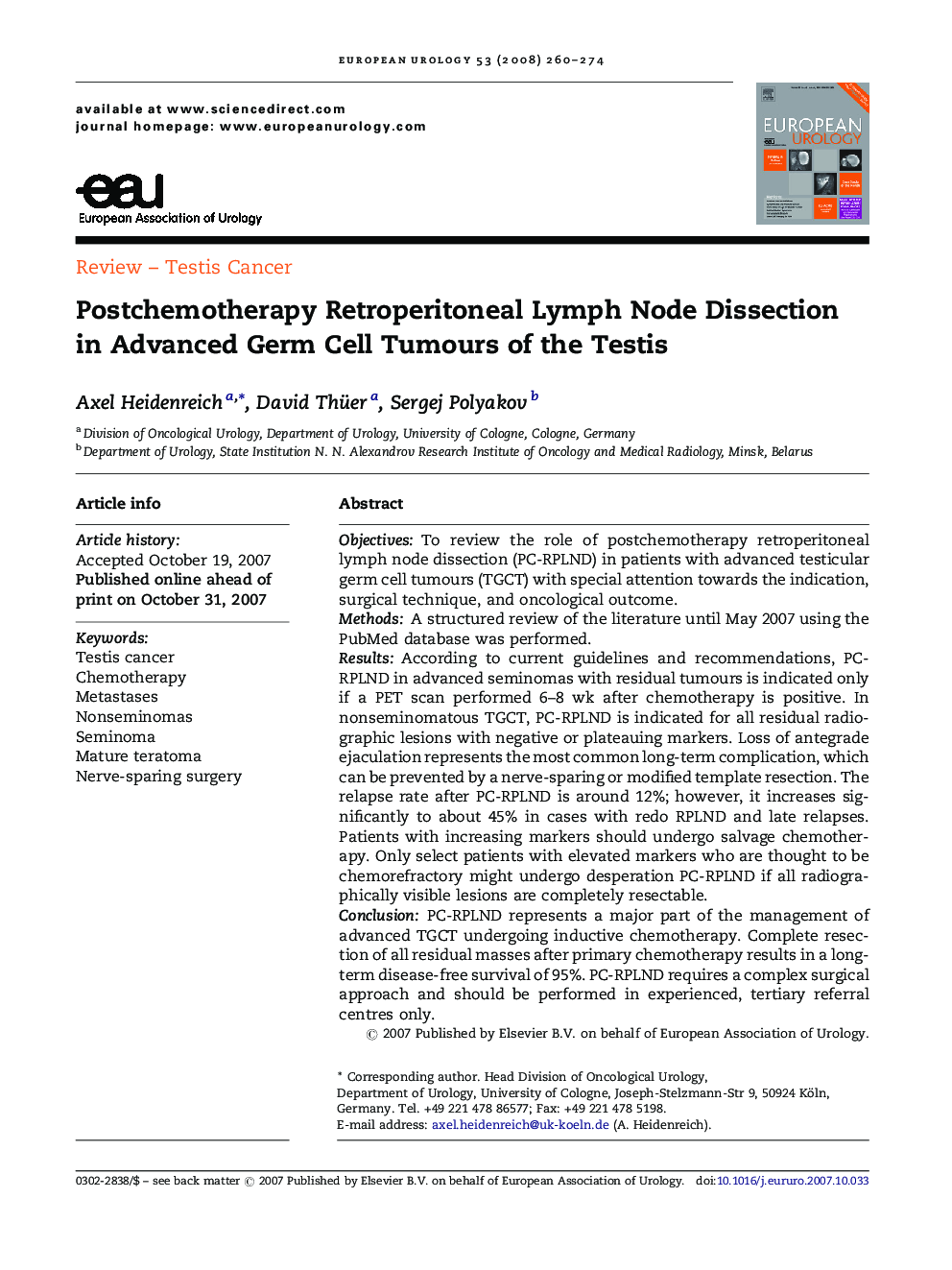| Article ID | Journal | Published Year | Pages | File Type |
|---|---|---|---|---|
| 3925889 | European Urology | 2008 | 15 Pages |
ObjectivesTo review the role of postchemotherapy retroperitoneal lymph node dissection (PC-RPLND) in patients with advanced testicular germ cell tumours (TGCT) with special attention towards the indication, surgical technique, and oncological outcome.MethodsA structured review of the literature until May 2007 using the PubMed database was performed.ResultsAccording to current guidelines and recommendations, PC-RPLND in advanced seminomas with residual tumours is indicated only if a PET scan performed 6–8 wk after chemotherapy is positive. In nonseminomatous TGCT, PC-RPLND is indicated for all residual radiographic lesions with negative or plateauing markers. Loss of antegrade ejaculation represents the most common long-term complication, which can be prevented by a nerve-sparing or modified template resection. The relapse rate after PC-RPLND is around 12%; however, it increases significantly to about 45% in cases with redo RPLND and late relapses. Patients with increasing markers should undergo salvage chemotherapy. Only select patients with elevated markers who are thought to be chemorefractory might undergo desperation PC-RPLND if all radiographically visible lesions are completely resectable.ConclusionPC-RPLND represents a major part of the management of advanced TGCT undergoing inductive chemotherapy. Complete resection of all residual masses after primary chemotherapy results in a long-term disease-free survival of 95%. PC-RPLND requires a complex surgical approach and should be performed in experienced, tertiary referral centres only.
